Getting B2B Ecommerce Right — Here's What I Learned From Experts

B2B ecommerce is a thriving industry. Growing at a rate of over 10% each year, B2B ecommerce will generate over $3 billion in sales by 2027.
However, no matter how familiar you are with B2C (business-to-consumer) ecommerce, selling to businesses is an entirely different beast.
I wanted to find out how exactly B2B ecommerce strategies differ from B2C ones, the different types of B2B ecommerce channels, and how to successfully market a B2B business, so I talked to the people who know it best.
Here’s how to get your B2B ecommerce strategy right, according to industry experts.
Table of Contents
B2B Ecommerce vs. B2C Ecommerce
There’s more than just a single-letter difference between B2B and B2C ecommerce. Everything from sales to customer acquisition to ecommerce trends is different when you’re selling to businesses online.
To better understand how B2B ecommerce differs — and can be more challenging — I spoke to a few experts.
Buying Cycle
For starters, the B2B ecommerce buying cycle is much longer than B2C.
Steve Hutt, the founder of eCommerceFastlane, suggests the process can stretch anywhere from three to nine months, depending on the industry. There are several reasons for this.
For one, B2B ecommerce involves multiple decision-makers. Even if you’re only in contact with one person, they need to get buy-in from their team.
Instead of selling to a single customer with a single need, you’re essentially selling to a team of people who may have multiple challenges to address. The approval process can take time on their end, which means B2B sellers also need to be flexible.
“This extended timeline requires patience and a strategic approach to nurturing leads,” says Hutt.
Order Value
Another key difference is the average order value (AOV). When you’re dealing with higher-priced goods or services or bulk orders through wholesale, each sale carries more weight. Where sales volume might be the goal in B2C ecommerce, order value is prioritized in B2B ecommerce sales.
“According to recent industry data, the average B2B order value sits at $491, compared to the average B2C order of $147,” explains Hutt. “This higher value reflects the bulk purchasing common in B2B transactions and underscores the importance of each sale.”
Pricing
Similarly, pricing is also a major difference between B2B ecommerce and B2C. B2C customers typically expect a straightforward, fixed price on whatever they’re purchasing, whereas B2B pricing structures are more fluid, suggests Gianluca Ferruggia, the general manager at online B2B marketplace DesignRush.
“We're often adjusting prices based on volume, specific contract terms, or ongoing negotiations,” says Ferruggia. “This makes transparent pricing a real challenge, and is a stark difference from the B2C world.”
Onboarding Process
Another difference I heard from ecommerce experts is the onboarding process. B2B products often have greater technical complexity, which leads to longer onboarding processes.
“In some industries, this can extend up to three months,” says Hutt. “However, this complexity also allows businesses to showcase their expertise and provide value through comprehensive support.”
Customer Retention
Customer retention also tends to be higher for B2B companies compared to B2C. When you consider how long the sales and onboarding processes are, not to mention the AOV being higher, it makes sense that customers invest longer.
“This higher retention rate emphasizes the long-term nature of B2B relationships,” says Hutt.
Data from SaaS Capital found that B2B SaaS companies have a median gross retention rate of 91%. Another report found that B2B industries like manufacturing have a 67% customer retention rate.
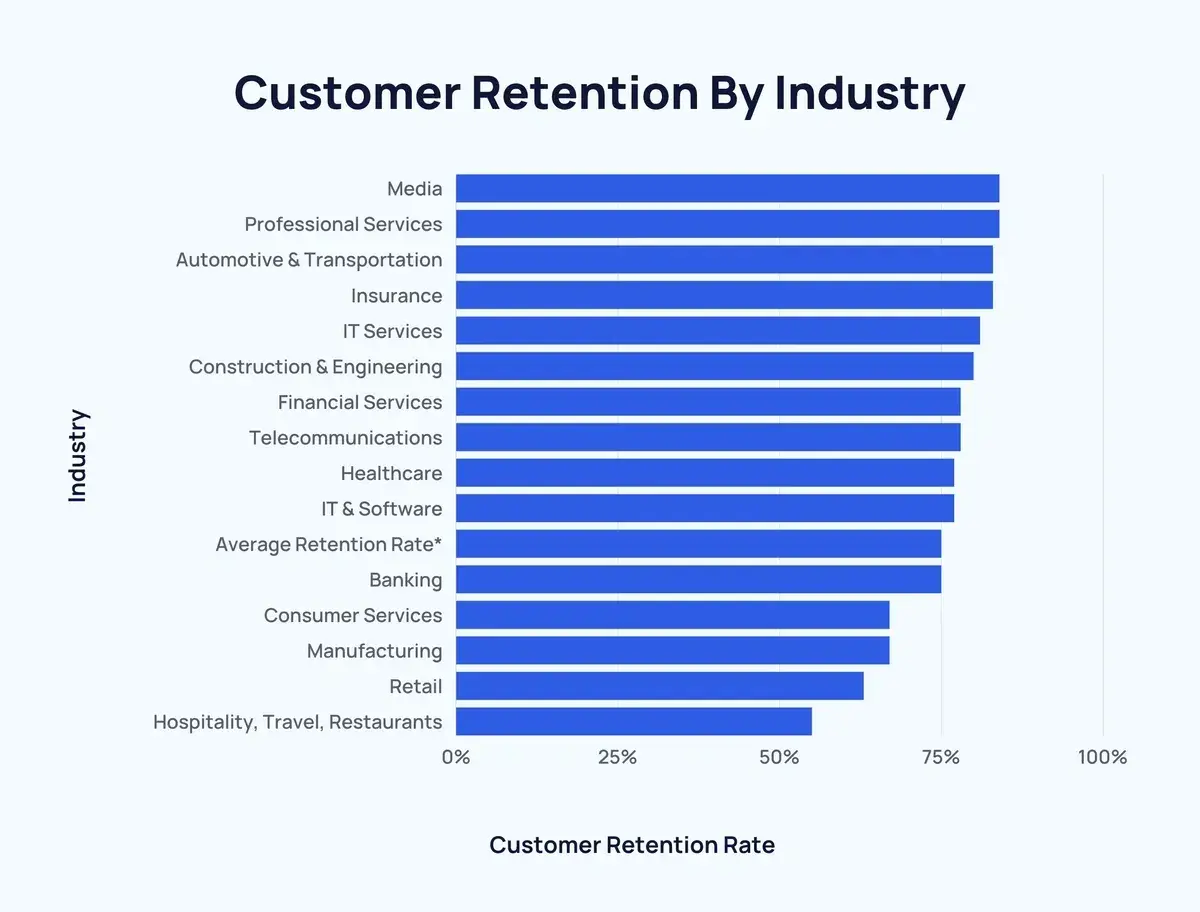
Before you can venture into B2B digital commerce, it’s important to understand how the industry is broken down. There are several types of B2B ecommerce channels. I want to highlight the most common types here.
1. Wholesale
B2B wholesale is a model where businesses sell goods or services in bulk to other businesses. Wholesale prices are typically offered at a discount for bulk purchases.
The goods are then sold to consumers at retail price for a profit. Businesses can sell wholesale from their own ecommerce site or use a B2B marketplace like Alibaba or Amazon Business.
2. Manufacturers
Manufacturers are businesses that create goods and products from raw materials, usually at their own factory or warehouse.
Manufacturers can sell directly to customers or work with a partner, like a distributor, to help them sell their products.
3. Distributors
Distributors work with manufacturers to sell the manufactured product to customers. Distributors use ecommerce marketing channels to promote the manufacturer’s goods in an effort to increase sales.
4. B2B Marketplace
B2B marketplaces are a growing (and thriving) sector of B2B ecommerce.
These marketplaces are online platforms that allow businesses to sell to each other. Think of them as retail platforms designed just for businesses rather than consumers.
According to Statista, Amazon Business and Alibaba are leading platforms among generalist B2B marketplaces. There are also specialized B2B marketplaces, such as DesignRush, which connects service providers with companies.
5. Software-as-a-Service (SaaS)
Software-as-a-Service (SaaS) is another popular type of B2B ecommerce. This business model involves companies paying a fee, either monthly or annually, to another company for access to the latter’s software.
Companies like HubSpot, Microsoft, and Dropbox are just a few examples of B2B SaaS platforms.
3 Top B2B Ecommerce Marketing Strategies
If you’re in the B2B digital commerce space and curious about how to improve your marketing, I asked the experts for their top ecommerce marketing strategies for B2B companies.
Strategy #1: Email Nurture Campaigns
As I mentioned earlier, the B2B sales cycle is much longer than the typical B2C process. Sellers must be actively engaged with prospects throughout the cycle if they want to stay on their radar.
This is where email nurture campaigns can be beneficial.
Tools like Opensend and Retention can help you identify potential customers after they’ve visited your website, i.e., when buyers are in their research phase, and target them with personalized outreach.
“Once we identify these potential leads, we initiate a personalized ‘Thanks for visiting’ campaign,” says Hutt. “We integrate the newly discovered email addresses into our email service provider (ESP), like Klaviyo, to start nurturing campaigns. This approach helps maintain brand visibility throughout the longer B2B sales cycle.”
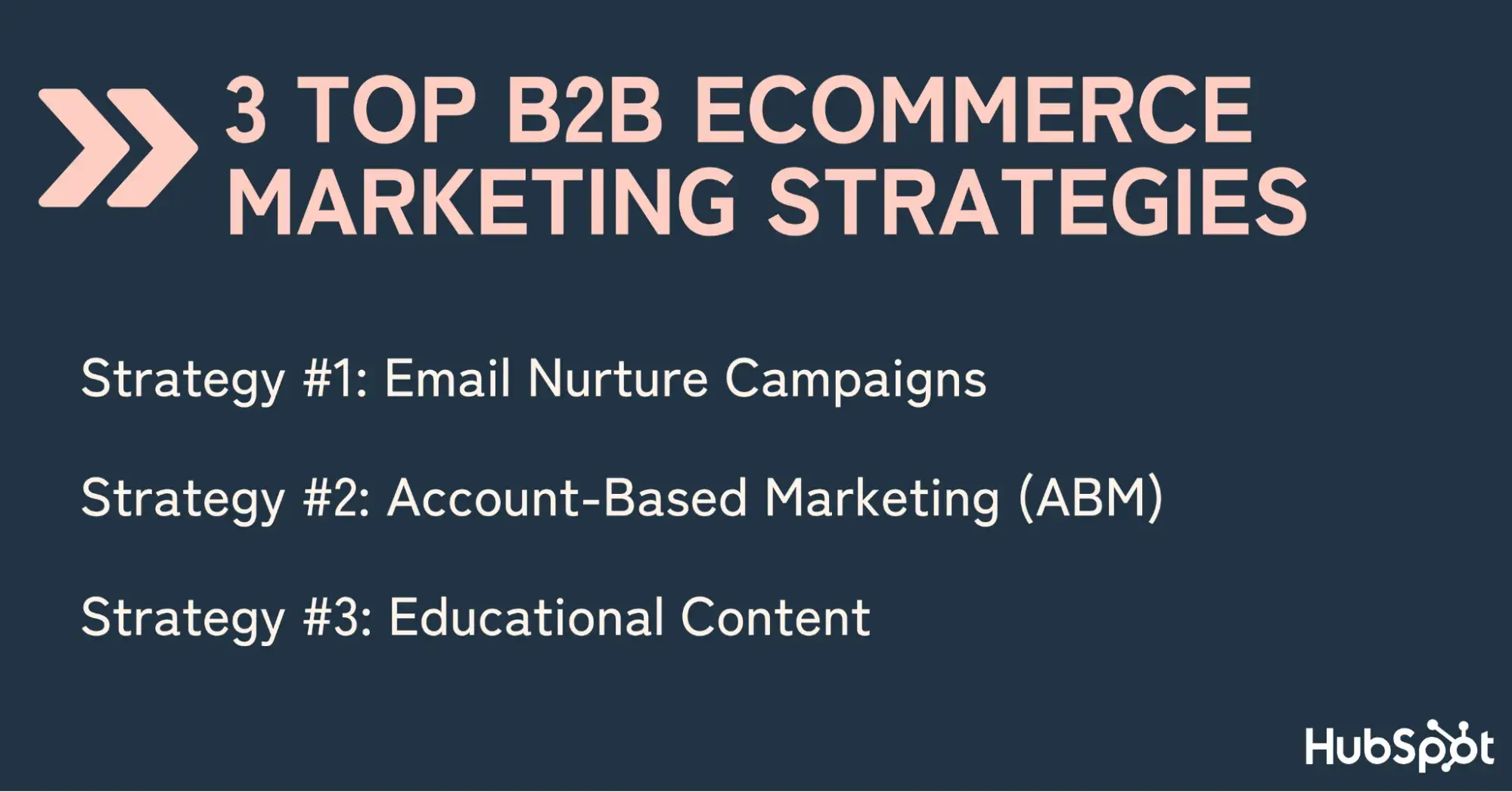
Strategy #2: Account-Based Marketing (ABM)
Account-based marketing (ABM) has also gained a lot of traction in B2B ecommerce, and for a good reason.
Personalization in sales is more important than ever, especially when 75% of B2B buyers prefer a self-service experience over working directly with a sales rep.
This means that when you do have an opportunity to meet with a prospect, your pitch must be tailored to their business needs to make the most of their time.
B2B sellers must show their commitment by regularly engaging with customers, offering tailored insights, adapting to their evolving needs, and giving buyers personalized marketing content that speaks to their pain points.
Being proactive with your marketing fosters loyalty and creates opportunities to add value to the relationship.
“For high-value accounts, ABM is a great way to provide value through a personalized content cadence that speaks directly to each stakeholder's unique challenges,” says Belinda Conde, head of marketing at Datos, a Semrush Company.
“One thing I’ve found especially important in B2B is focusing on problem-solving rather than feature-selling. It’s about providing value first — helping your audience tackle their pain points before you even ask for anything in return.”
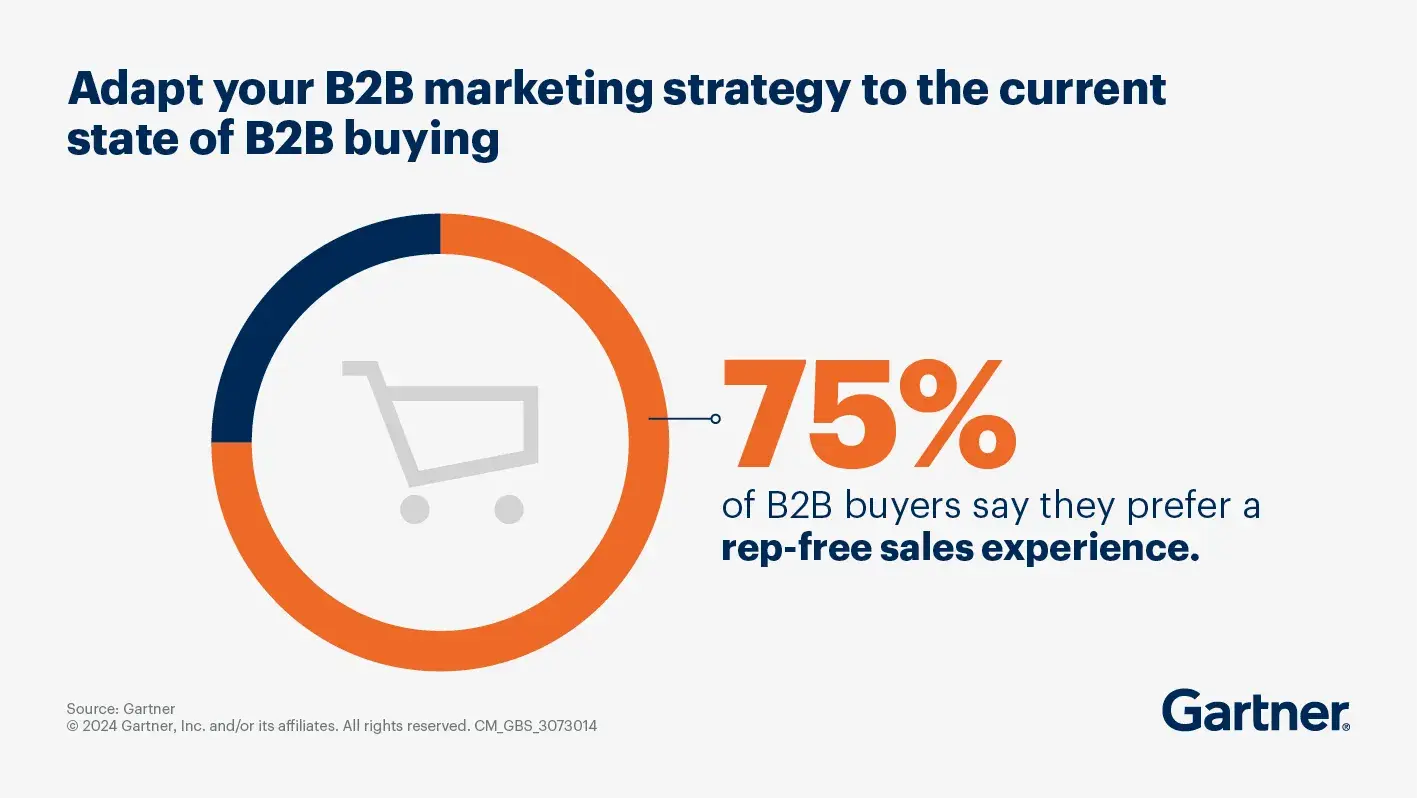
Strategy #3: Educational Content
I heard from a lot of experts that educational, hyper-relevant content is essential for any B2B ecommerce marketing strategy.
A B2B buyer wants to see evidence such as case studies, ROI calculators, and industry-specific guides. They want proof that your solution doesn’t just sound good but works in practice and for businesses like theirs, shares Paul Drecksler, an ecommerce expert and the founder of Shopifreaks.
“B2B ecommerce marketing is about meeting [customers] where they are and saying, ‘We get your world, and here’s exactly how we fit into it,’” he says.
Drecksler shares one marketing campaign that stuck out to him. “I remember one campaign that focused on segmented landing pages with tailored messaging for each industry,” he recalls.
“Each page had its own set of statistics, examples, and testimonials specific to that sector — whether it was healthcare, finance, or logistics — and each vertical got a narrative that showed an understanding of their unique challenges and priorities.”
B2B Ecommerce Examples
If you’re looking for inspiration for your ecommerce business, I’ve collected a few B2B ecommerce examples that I found helpful.
In my opinion, these companies showcase how to tailor content, landing pages, and user experience to a B2B buyer in an impactful way.
Microsoft
Microsoft showcases its use cases for different industries by creating industry-specific landing pages. They outline their solutions for healthcare, education, finance, and more.
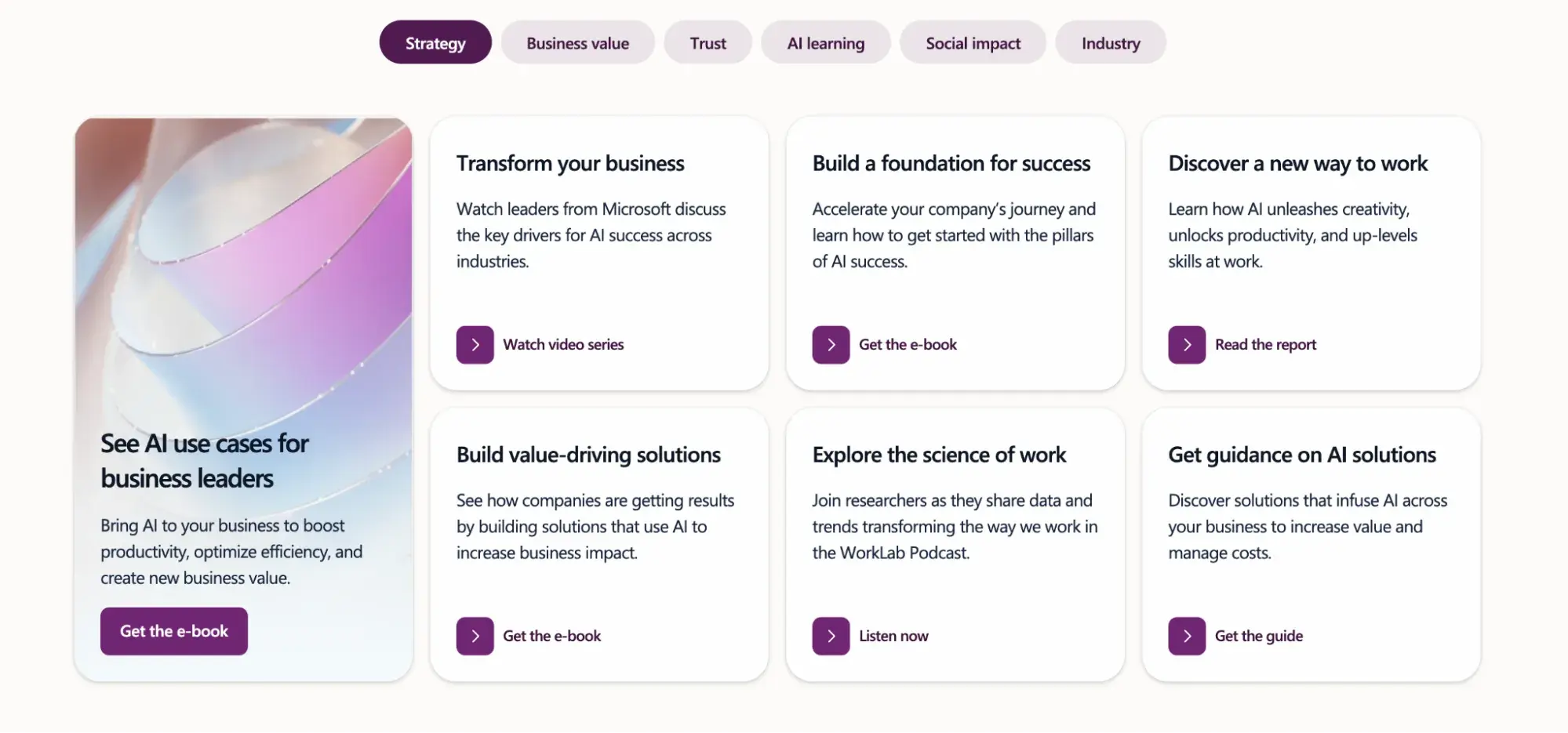
What I like most is the way Microsoft markets its AI solutions. They have a section on their website that is tailored to business leaders.
I like that this campaign speaks to a specific buyer and breaks down the AI use cases that business leaders seek, like boosting productivity, optimizing efficiency, and driving more value across the business.
Faire
Faire is a B2B wholesale platform that connects independent retailers and brands. Even though I’m neither a retailer nor do I sell products, I’ve been a longtime fan of the Faire platform. I personally love its branding and messaging.
To me, it’s clear Faire knows its target market and tailors everything from its imagery to its copy to that customer.
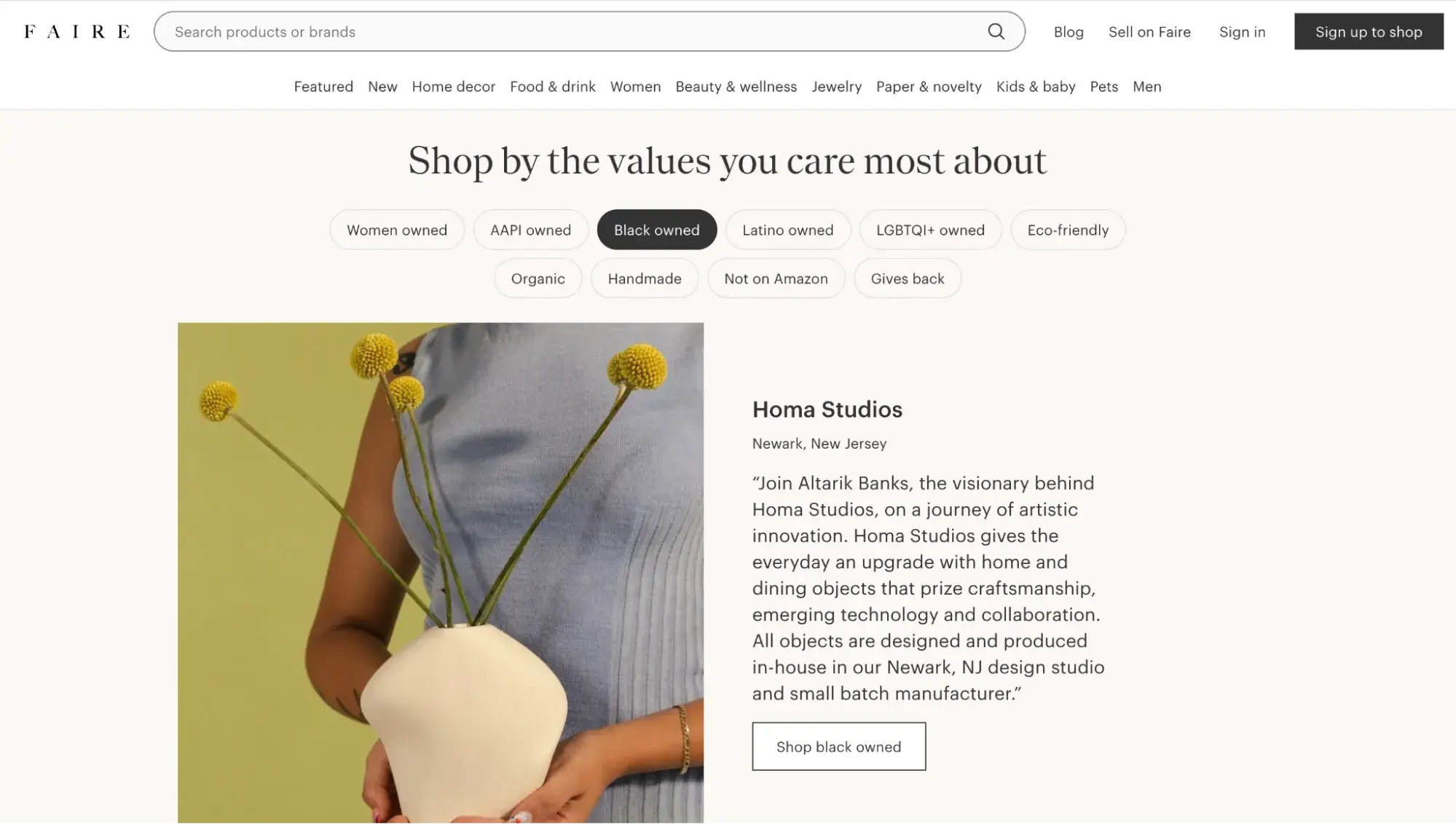
I especially like how the website is organized. Wholesale customers can browse different products by categories, bestsellers, or even based on the values that align with their brand.
Grainger
Grainger is a leading distributor of industrial supplies and equipment. The business operates retail stores and an ecommerce site for businesses of all sizes to shop for the tools and parts they need for a job.
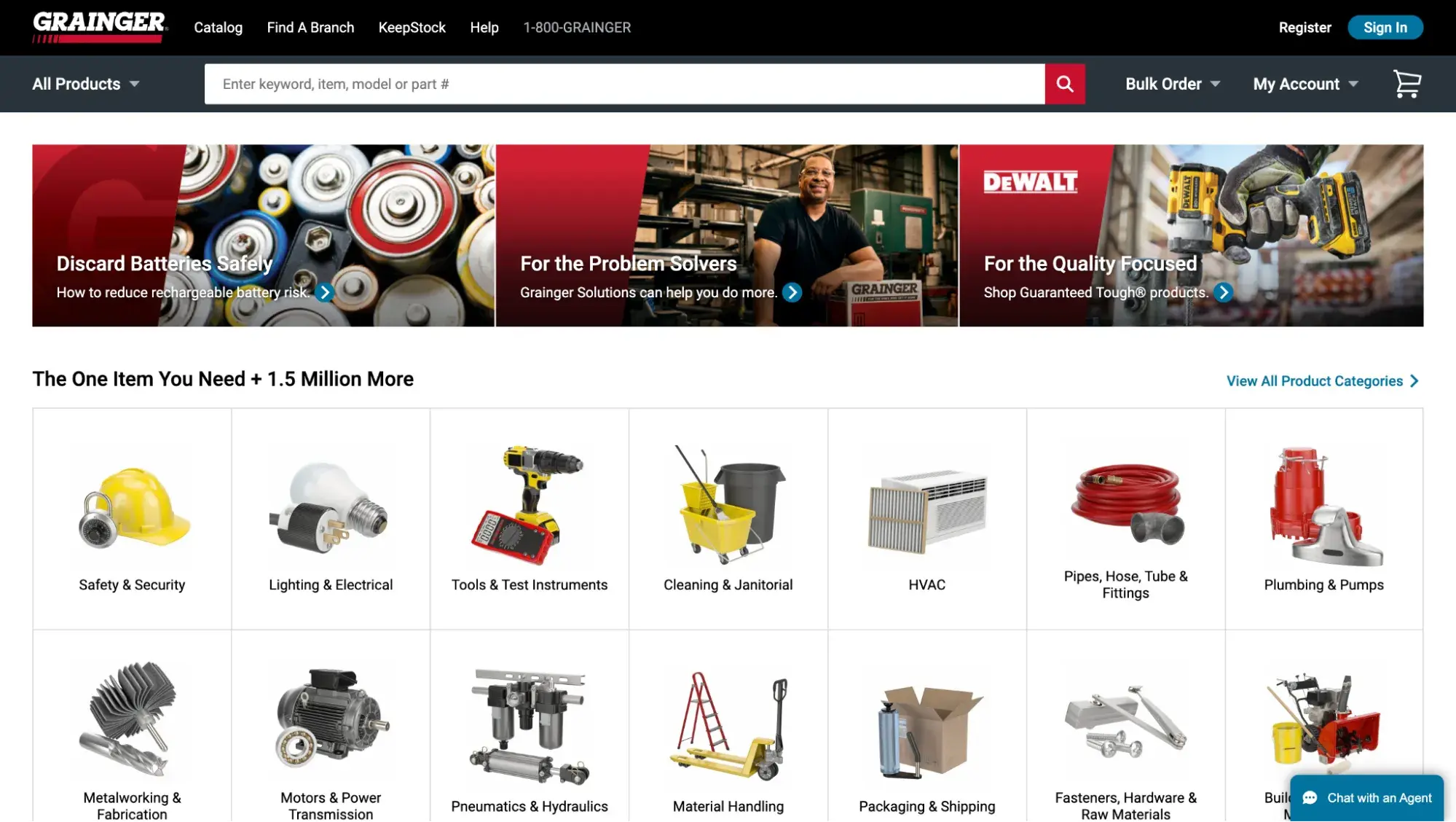
My favorite part about Grainger’s ecommerce experience is the bulk order process. The simple feature is straightforward and mimics an order pad you’d see a salesperson use in-store. Buyers can easily browse the product catalog, add the item numbers and quantities to their bulk orders, and make their purchases.
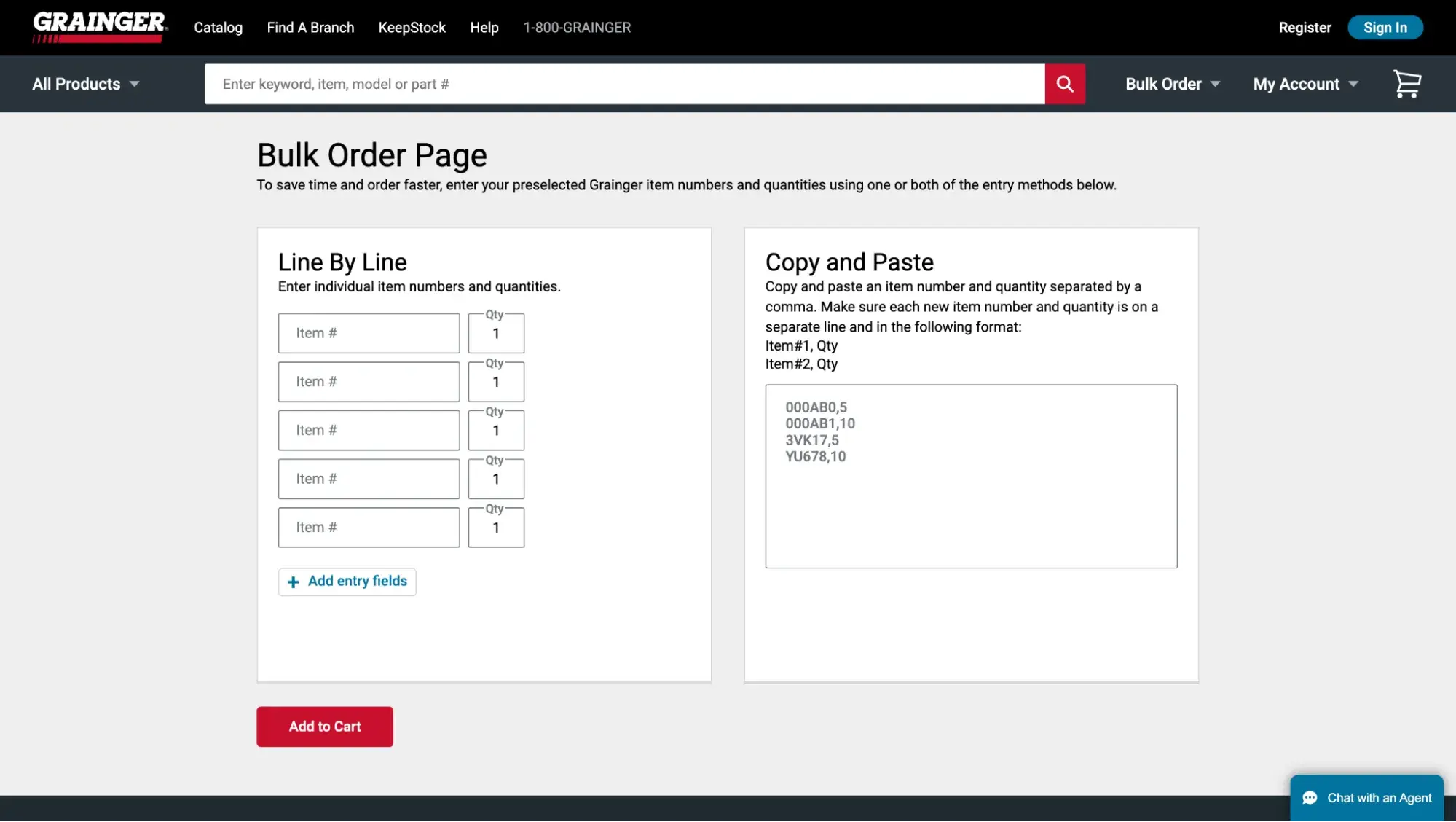
Shopify
Shopify regularly shares educational content for sellers across its blog and social media. This marketing content showcases Shopify’s deep industry knowledge and how its specific features can help businesses improve their sales.
For example, this LinkedIn carousel from Shopify breaks down three platform features that Shopify merchants can use to optimize their shipping strategy during Black Friday shopping.
This speaks to one of their customer’s pain points — keeping up with the influx of sales during the holiday season — and showcases how Shopify can help.
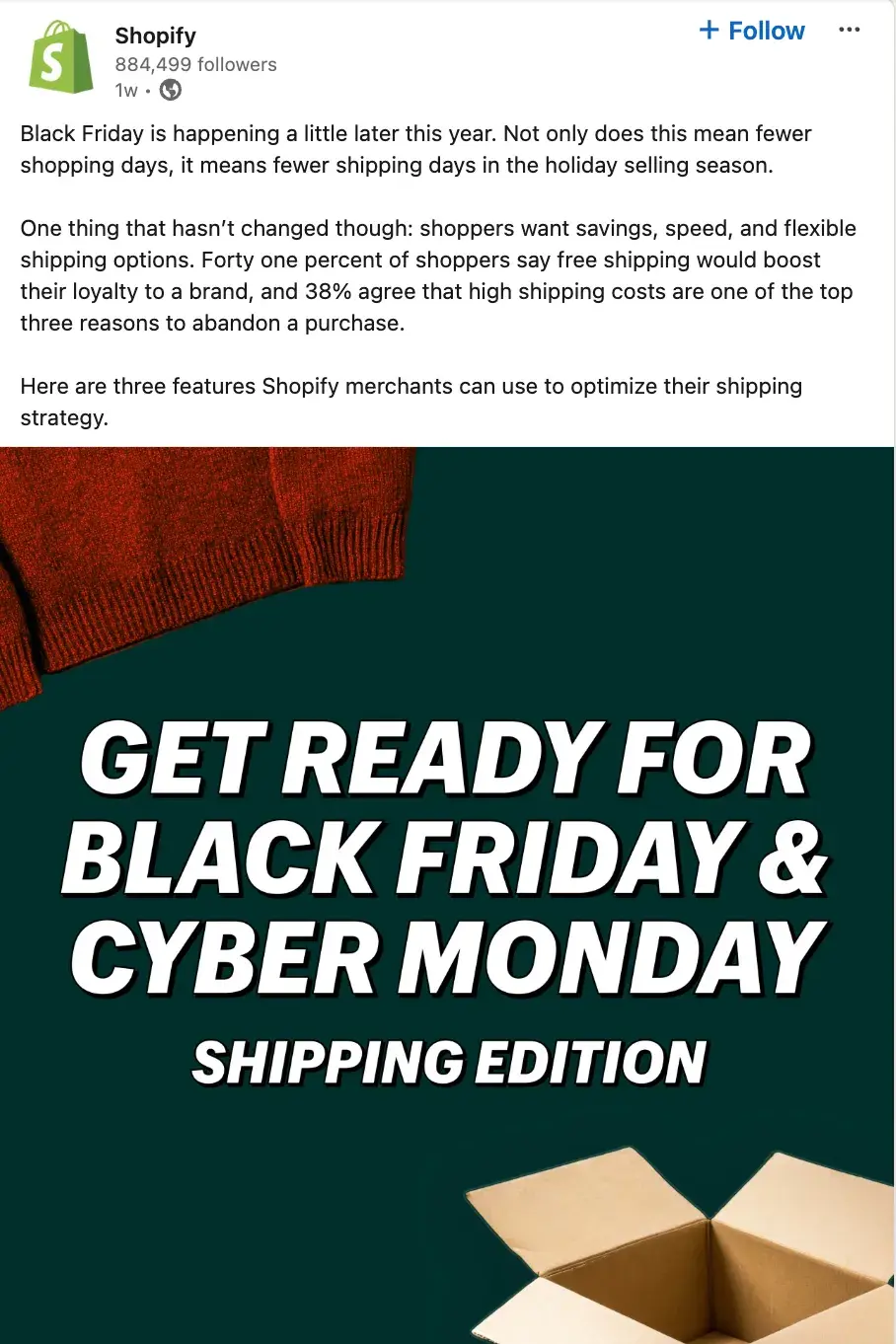
Check out HubSpot’s Commerce Software to launch your B2B ecommerce business online.
What I Learned About B2B Ecommerce
While I initially began this article thinking B2B ecommerce was wildly different from B2C ecommerce, I learned that they have a lot in common.
B2B ecommerce is built off of the same principles as any other ecommerce — selling products or services — but the channels, processes, pricing, and marketing strategies are different.
Like consumer ecommerce, it’s critical to understand your audience when you’re in the B2B ecommerce space. When you understand their pain points, perceived value, and what they’re looking for in a partner, you can optimize your ecommerce experience to suit their needs.
Comments
Post a Comment